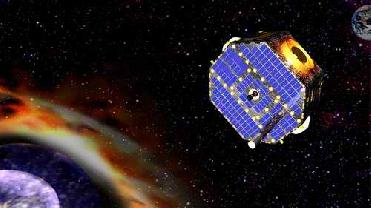
IBEX mission is set for launch on October 19
WASHINGTON (BNS): For the first time a spacecraft will image and map the dynamic interactions taking place where the hot solar wind slams into the cold expanse of the space.
The two-year Interstellar Boundary Explorer, or IBEX mission set for launch on October 19 will begin from the Kwajalein Atoll, a part of the Marshall Islands in the Pacific Ocean.
According to NASA, IBEX will conduct extremely high-altitude orbits above Earth to investigate and capture images of processes taking place at the farthest reaches of the solar system. Known as the interstellar boundary, this region marks where the solar system meets interstellar space.
“The interstellar boundary regions are critical because they shield us from the vast majority of dangerous galactic cosmic rays, which otherwise would penetrate into Earth's orbit and make human spaceflight much more dangerous,” said IBEX principal investigator David J McComas.
The story of the outer solar system began to unfold when the Voyager 1 and 2 spacecraft left the inner solar system and headed out towards the boundary between the solar system and interstellar space.
“The Voyager spacecraft are making fascinating observations of the local conditions at two points beyond the termination shock that show totally unexpected results and challenge many of our notions about this important region,” McComas said.
Other spacecraft have continued the exploration of the interstellar boundary region. “Recently, a pair of NASA sun-focused satellites, the Solar Terrestrial Relations Observatory mission, detected a higher-energy version of the particles IBEX will observe in the heliosphere. The heliosphere is an area that contains the solar wind. It stretches from the Sun to a distance several times the orbit of Pluto,” the scientist said.
NASA said that IBEX is poised to thoroughly map this interstellar boundary region of the solar system. The images will allow scientists to understand the global interaction between the Sun and the galaxy for the very first time.
The spacecraft will be launched aboard a Pegasus rocket dropped from under the wing of an L-1011 aircraft flying over the Pacific Ocean. The Pegasus will carry the spacecraft approximately 130 miles above the Earth and place it in orbit.
According to IBEX programme executive at NASA Headquarters in Washington Willis Jenkins, what makes the IBEX mission unique is that it has an extra kick during launch. “An extra solid-state motor pushes the spacecraft further out of low-Earth orbit where the Pegasus launch vehicle leaves it,” Jenkins said.
 Previous Article
Previous Article













The Indian Air Force, in its flight trials evaluation report submitted before the Defence Ministry l..
view articleAn insight into the Medium Multi-Role Combat Aircraft competition...
view articleSky enthusiasts can now spot the International Space Station (ISS) commanded by Indian-American astr..
view article